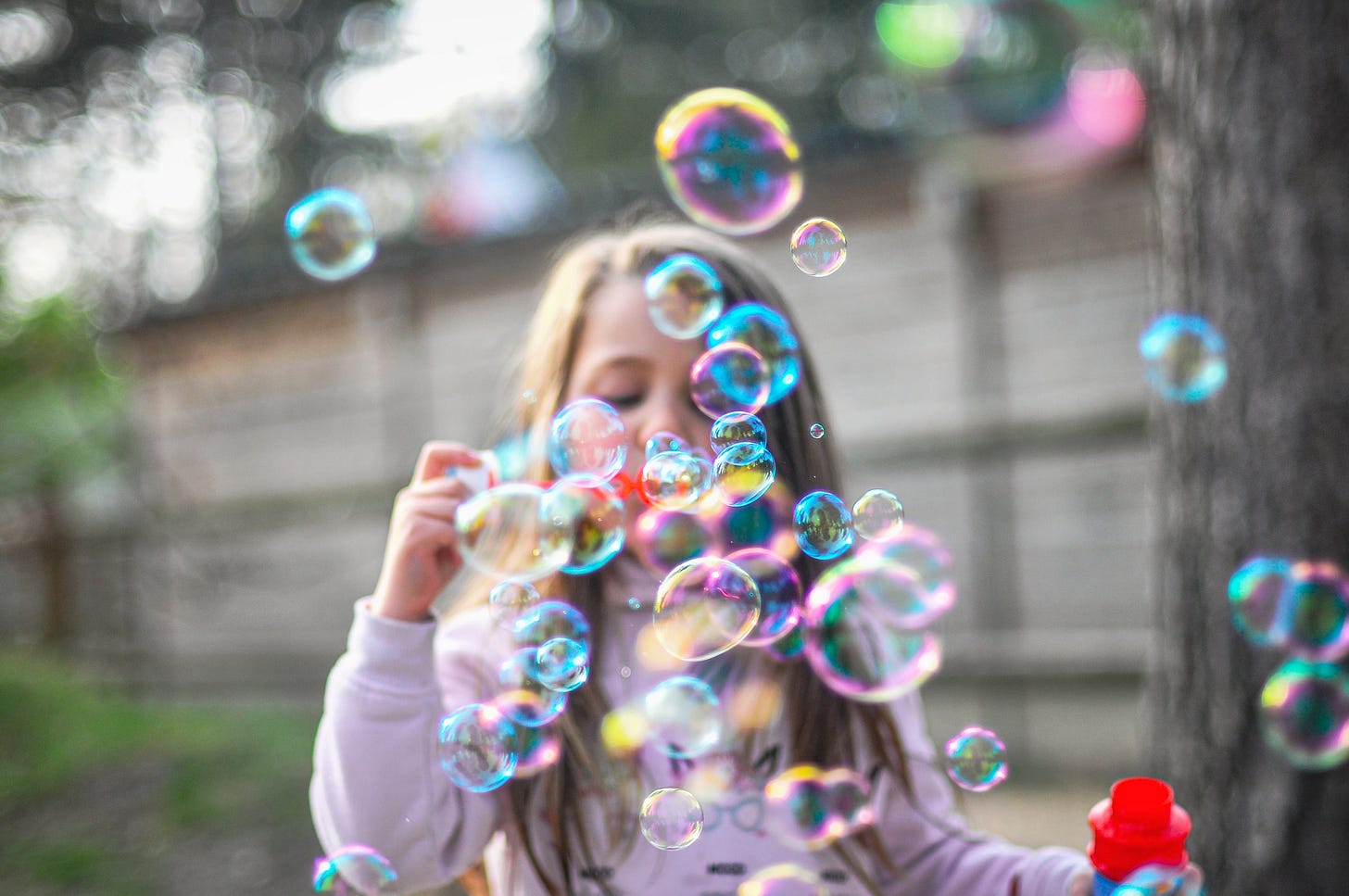Mindfulness exercises are tedious by design.
We feel more at home making sense of our experiences than observing the details that comprise them.
There’s a logical reason for this.
Which do you find easier to focus on for a solid minute?
Feel the weight and temperature of your hands resting in your lap.
Imagine a scenario you worry could happen soon.
I know you already know the answer to this, but I dare you to try both using a timer to compare your sense of how the minutes pass.
You don't have two minutes to experience this, right? I get it. The challenges and benefits of mindfulness are so much easier to imagine than experience. I double dare you to invest the two minutes an this experiment to make it tangible.
Spoilers: The second one gobbles up time, while the first one slowly nibbles at your sanity, the way holding a plank pose saps your strength.
Let’s be honest. Deciding to notice ordinary sensory details is like choosing between binge-watching an overrated series everyone is talking about or watching paint dry.
If this is true, why do I enthusiastically claim that practicing mindfulness enhances attentional fitness, leading to better responsiveness, a greater sense of agency, and improved psychological well-being?
Just as supporting your body on your elbows for sixty seconds a few times a week helps build your core strength, regularly tuning into your real-time perceptions leads to greater curiosity and vitality.
Both practices must become habitual to make a significant impact.
Avoiding boredom comes naturally; fascination takes practice
The essence of mindfulness practice is remembering to attend to what’s happening while it’s happening. The level of composure needed for this varies with each situation. It’s easier to savor pleasant moments than uncomfortable ones, but it’s possible to improve our ability to wrestle with them less.
This doesn’t require much time. It only takes a few seconds to notice a sight, sound, or sensation. The challenge lies in setting aside the urge to analyze, judge yourself, or think about your tasks even for a few seconds.
Attending to ordinary perceptions that don’t demand our attention is counterintuitive. Our internal narratives can be relentless and, by nature, are about things we care about personally. Taking even short breaks from prioritizing them makes us uneasy, contrasting with the peaceful images often associated with mindfulness.
Easing into fascination
A great way to take short breaks from the stories in your mind is to focus on something in your body or your surroundings that changes while you observe it. This move can help gently redirect your attention back to the present.
trees swaying in the breeze
the play of light on a ceiling, wall, or floor
mechanical or human sounds in the distance
conversations in a language you don’t speak
hunger pangs increasing or subsiding
Take five seconds to identify something that is changing right now. If you’re surrounded by silence and stillness, notice a few exhales or the beating of your heart.
What you observe doesn’t need to produce an interesting story. Instead, make a secret hobby of immersing yourself in details that exist outside of any narrative.
Recycling reactions
To enhance your capacity to be wowed by mundane phenomena, practice becoming aware of your body's reactions to specific sights, sounds, sensations, and thoughts.
In this way, you can habitually recycle your reactions to perceptions by observing your body’s response to them. This habit can make even dull, repetitive tasks feel more alive and enjoyable activities more satisfying.
Where do you sense the body reacting?
Is it subtle, moderate, or intense?
Sometimes there’s no observable reaction, which can be interesting to notice
Is the feeling pleasant, unpleasant, or complicated?
Does it seem physical, emotional, or both?
Does it change in some way? Spread, shrink, intensify, or fade away?
Take a few seconds to investigate your body’s real-time reactions by feeling them on purpose.
Looking out a window feels like this.
Tasting the first bite of lunch feels like this.
Swallowing the last bite feels like this.
Listening to a song I love feels like this.
Hearing my phone ring or vibrate feels like this.
Worrying feels like this.
Being bored feels like this.
Staying through the boredom
Your mindfulness practice needs to become fascinating to be sustainable.
If you’re willing to be fascinated by boredom, even briefly, you can set the stage for a visceral relief that’s impossible to imagine.
You can transform boredom into fascination if you’re willing to attend to details that don’t demand your attention, more often than never. Observing your body’s reactions to whatever you notice will provide a significant, much-needed boost.
Your attempts to navigate boredom with curiosity will pay off more quickly than you think.







"Your mindfulness practice needs to become fascinating to be sustainable." Amazing, and true. We can't be bored and sustain something like this.